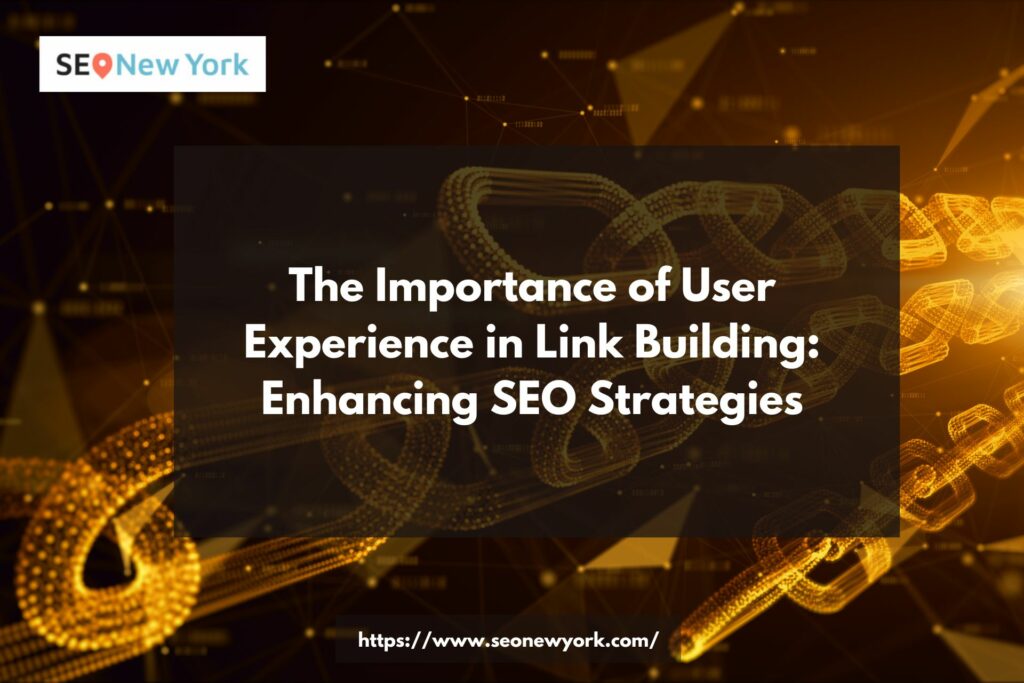Link building has long been a crucial aspect of search engine optimization (SEO). It involves acquiring hyperlinks from other websites to your own, which helps improve your website’s visibility and authority in the eyes of search engines. While traditional link building strategies have focused primarily on quantity, the focus is now shifting towards quality and relevance. In this modern landscape, the importance of user experience in link building cannot be overstated.
Effective link building requires more than simply obtaining backlinks from reputable sources. Search engines, such as Google, have evolved to prioritize websites that offer valuable and engaging experiences to their users. Consequently, user experience has become a pivotal factor in determining search engine rankings. Understanding and optimizing user experience in link building is now crucial to achieving sustainable SEO success.
The Importance of User Experience in Link Building
User experience plays a vital role in link building and overall SEO success. When search engines evaluate websites for ranking purposes, they consider various factors related to user experience. Let’s delve deeper into the significance of user experience in link building:
Improved Website Engagement: User experience encompasses elements such as site speed, mobile responsiveness, intuitive navigation, and visually appealing design. By providing a positive user experience, you enhance website engagement, reducing bounce rates, and increasing time spent on your website. These factors indicate to search engines that your site offers value, making it more likely to be considered for higher rankings.
Increased Dwell Time: Dwell time refers to the amount of time users spend on your website before returning to the search results. When users find your content informative, engaging, and easy to navigate, they are more likely to stay longer, exploring multiple pages. This extended dwell time sends positive signals to search engines, indicating that your website provides valuable information.
Lower Bounce Rates: Bounce rates represent the percentage of users who leave your website after viewing only one page. High bounce rates can negatively impact your search engine rankings, suggesting that users did not find what they were looking for or had a poor experience. By optimizing user experience, you can decrease bounce rates, improve engagement, and increase the likelihood of obtaining high-quality backlinks.
Enhanced Social Signals: Social media platforms are increasingly influential in determining a website’s visibility and reputation. When users have a positive experience on your website, they are more likely to share your content on social media platforms, increasing your reach and attracting more organic traffic. This, in turn, can lead to additional backlinks, further strengthening your link building efforts.
Establishment of Trust and Authority: User experience is closely linked to building trust and establishing authority in your niche. By providing an intuitive, credible, and user-friendly website, you instill confidence in your audience. As a result, other websites and industry influencers are more inclined to reference and link to your content, elevating your website’s credibility and improving its chances of ranking higher in search engine results.
Positive Impact on Core Web Vitals: Core Web Vitals are a set of user-centered metrics that measure critical aspects of web performance. These include factors like page loading speed, interactivity, and visual stability. By optimizing user experience, you improve your website’s Core Web Vitals, enhancing its overall performance and increasing the likelihood of achieving higher search engine rankings.
FAQs about the Importance of User Experience in Link Building
How does user experience affect link building?
User experience directly impacts link building by influencing website engagement, dwell time, bounce rates, social signals, and the establishment of trust and authority. By providing a positive user experience, you increase the likelihood of attracting high-quality backlinks, ultimately improving your website’s search engine rankings.
Can user experience alone improve link building outcomes?
While user experience is a critical factor, it should be combined with other effective link building strategies for optimal results. User experience can enhance your website’s appeal and make it more link-worthy, but it’s essential to complement it with relevant and high-quality content, outreach efforts, and strategic partnerships.
How can I optimize user experience for better link building?
To optimize user experience, focus on improving site speed, mobile responsiveness, navigation, and overall design. Create valuable and engaging content that meets the needs of your target audience. Implement intuitive calls-to-action and ensure your website is accessible and user-friendly across different devices.
Does link building affect user experience?
Link building, when done effectively, can positively impact user experience by directing users to relevant and authoritative content. However, excessive or irrelevant links can hinder user experience by leading to low-quality or unrelated websites. It’s crucial to maintain a balance and ensure that the links you build provide value to your users.
How long does it take to see the impact of user experience on link building and SEO?
The impact of user experience on link building and SEO can vary depending on several factors, such as the competitiveness of your industry, the quality of your content, and the level of optimization implemented. While some improvements may be noticeable in the short term, it often takes consistent efforts and time to see significant, long-lasting results.
Are there any tools or metrics to measure user experience in link building?
Several tools and metrics can help assess user experience in link building. Google Analytics provides valuable insights into website engagement, bounce rates, and time on page. Additionally, tools like PageSpeed Insights and Lighthouse can help identify areas for improvement related to site speed and Core Web Vitals.
